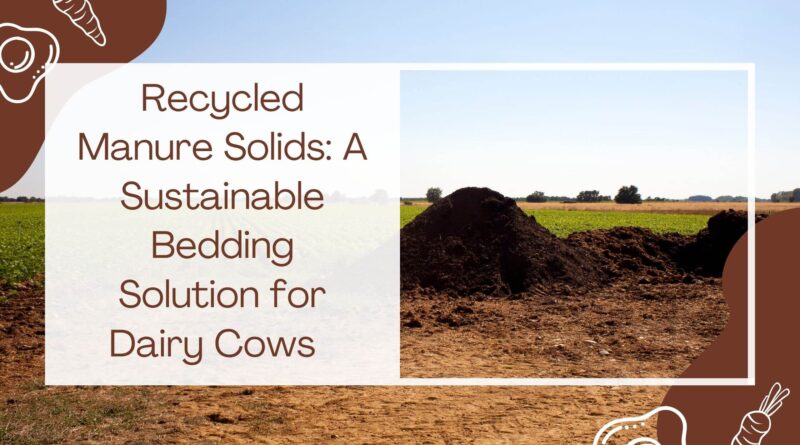Recycled Manure Solids : A Sustainable Bedding Solution for Dairy Cows
As the dairy industry evolves, so do the solutions to everyday farm management challenges. One such innovation gaining traction across the globe is the use of Recycled Manure Solids (RMS) as an alternative bedding material for dairy cows. With traditional bedding materials like straw, sawdust, and sand becoming increasingly costly or hard to source, RMS offers a cost-effective, sustainable, and on-farm solution—but it comes with important caveats.
A manure scraper efficiently removes waste from barn floors, maintaining cleanliness and enhancing cow comfort in dairy farms.
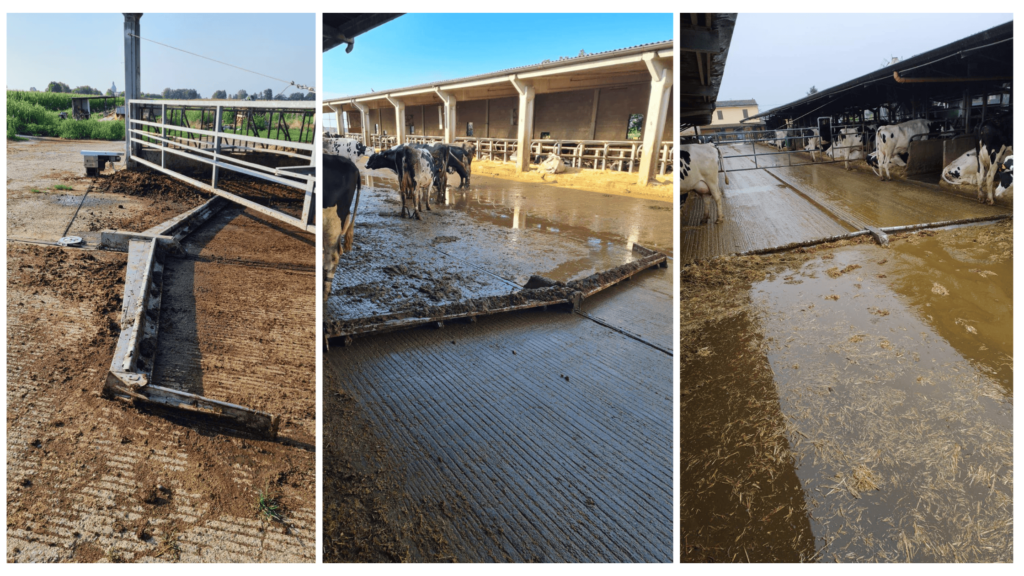
This blog explores what RMS is, how it works, its benefits, potential health risks, and best practices for safe and effective use.
What Are Recycled Manure Solids (RMS)?
RMS are the solid fraction of manure extracted from liquid slurry using mechanical separators. Once separated, the solids resemble a moist, fibrous material and are used as bedding for cows, often in cubicle housing systems.
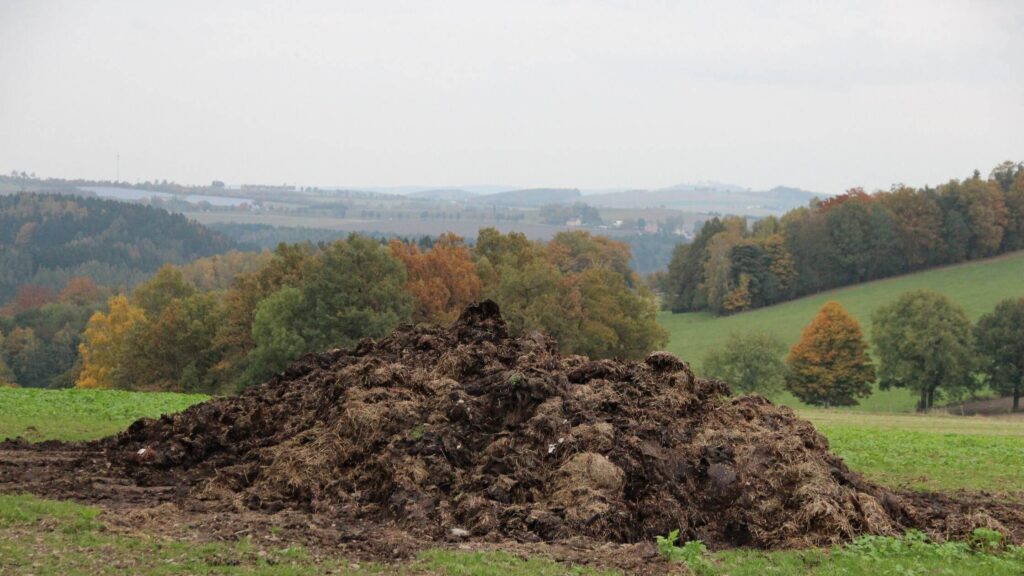
Common separation methods include:
Screw press separators
Roller presses
Centrifuge systems
Slope screen separators
After separation, the solids can either be used raw, dried, or composted to reduce moisture and bacterial load before being spread as bedding in stalls.
Efficient pumping and mixing solutions ensure uniform manure consistency, prevent solids build-up, and enhance nutrient distribution for effective storage and application.
Advantages of Using RMS Bedding
1. Cost Efficiency
RMS bedding is significantly more affordable than commercial bedding alternatives:
On-farm production eliminates transport and purchase costs.
Consistent supply from your own herd reduces dependency on external markets.
Valuable nutrient recycling means lower fertilizer bills when remaining slurry is reused on fields.
2. Sustainability & Environmental Benefits
Using RMS supports circular farm systems:
Reduces waste disposal needs.
Cuts down on bedding material imports.
Lowers carbon footprint from transportation and processing of purchased bedding.
3. Animal Comfort
When processed and maintained correctly, RMS provides a soft, cushion-like texture that improves:
Lying time and comfort.
Cow cleanliness (when bedding is dry and well-managed).
Reduction in lameness or hock damage than harder surfaces like sand.
4. Ease of Spreading
RMS is easier to handle and spread mechanically during cleaning and refreshing routines, which helps maintain hygiene and reduces labor.
A manure separation system divides solids and liquids to enable targeted treatment, reduce storage volume, and improve nutrient management efficiency on dairy farms.
Potential Risks and Disadvantages
While RMS offers many benefits, it also comes with biological and regulatory challenges that must be carefully managed.
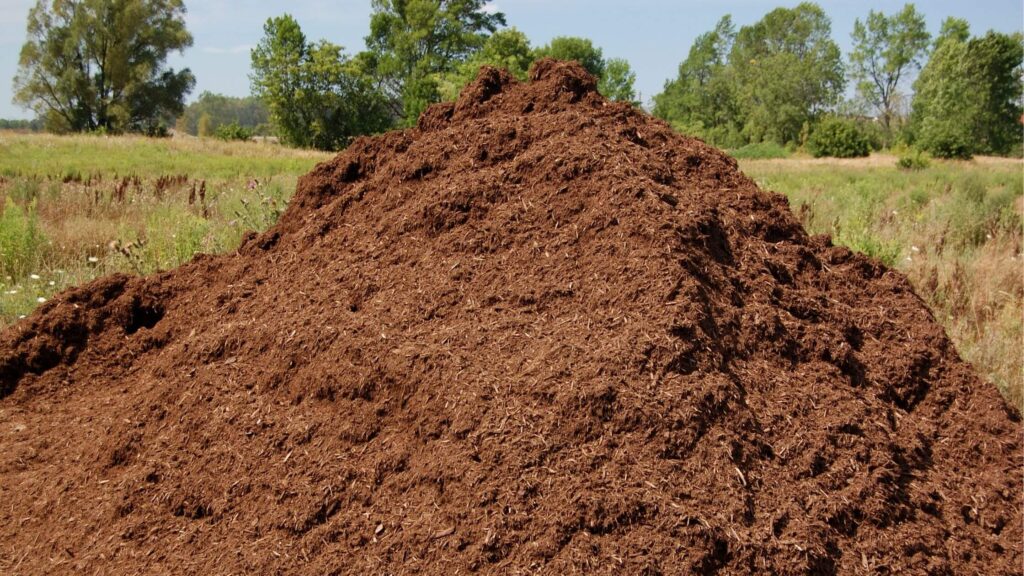
1. Pathogen Load
Raw RMS can harbour high levels of bacteria, especially:
Coli forms (E. coli, Klebsiella)
Streptococcus spp.
Salmonella
Listeria
This raises concerns around:Environmental mastitis (udder infections)
High somatic cell counts (SCC)
Milk hygiene and quality degradation
2. Moisture Content
RMS is typically wetter than sawdust or straw. High moisture creates an ideal breeding ground for bacteria. This demands:
Daily stall maintenance.
Thick bedding layers that are regularly replaced.
Drying or composting before use.
A dewatering screw slurry separator is a mechanical device that separates liquid from solid manure using a screw press, producing drier solids for easier handling and reducing the load on storage and treatment systems.
3. Regulatory Restrictions
In the UK and many other countries:
Farms under TB restrictions may be prohibited from using RMS bedding.
Some regions require a permit or adherence to strict sanitation guidelines.
RMS cannot be used on organic farms unless certified.
Best Practices for RMS Bedding Use
To make RMS a safe and effective bedding option, farmers must follow best management practices:
🔹 1. Processing & Treatment
Use mechanical separators to separate solids from slurry.
Aim for a dry matter content of at least 30–36%.
Consider composting solids at thermophilic temperatures (above 55°C) for 7–10 days to reduce pathogens.
🔹 2. Bedding Management
Apply RMS bedding in deep layers (10–15 cm) and level them to reduce pooling.
Turn or replace bedding daily to ensure dryness.
Use lime or bedding conditioners to reduce pH and bacterial activity.
🔹 3. Milking Hygiene
Implement pre-milking teat disinfection and drying.
Maintain clean udder areas and cubicles.
Monitor somatic cell count (SCC) and clinical mastitis incidence regularly.
🔹 4. Stall and Barn Design
Ensure adequate ventilation and drainage to keep bedding dry.
Design stalls that encourage natural lying behavior but minimize manure contact with udders.
🔹 5. Monitoring & Testing
Conduct regular microbial testing of bedding samples.
Track cow comfort, lameness scores, and milk quality metrics to assess bedding performance.
Real-World Experience: Farmer Insights
According to trials conducted by AHDB and Farming Connect, RMS can be successfully integrated on farms of various sizes when:
A tractor-mounted manure scraper is an efficient tool used to clear manure from barn alleys and yards, ensuring cleaner surfaces, improved hygiene, and reduced labor in dairy farm operations.
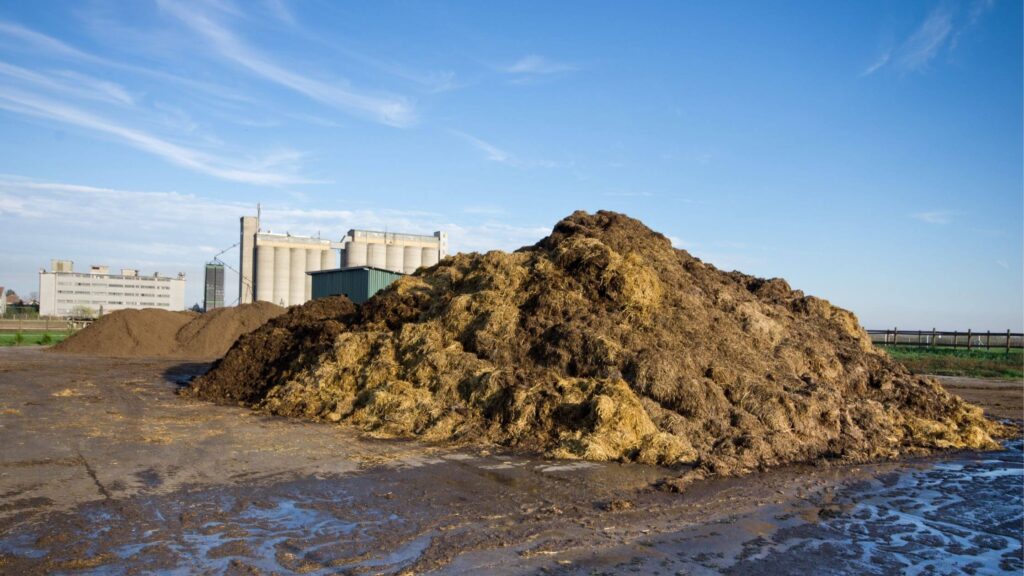
A clear standard operating procedure is followed.
RMS is used only with healthy cows and not on fresh calves or sick animals.
Continuous training for staff on handling, cleaning, and monitoring is provided.
One Welsh farmer reported:
“Using RMS cut bedding costs by 60% annually. With strict hygiene and daily stall levelling, cow comfort actually improved, and we didn’t see any spike in mastitis cases.”
Comparison: RMS vs Traditional Bedding
Feature | Recycled Manure Solids | Straw/Sawdust | Sand |
Cost | Low (on-farm sourced) | Medium–High | Medium |
Comfort | High (when dry) | Good | Excellent |
Pathogen Risk | Higher (needs control) | Moderate | Low |
Maintenance | High | Medium | Medium–High |
Environmental | Sustainable | Variable | Can be non-renewable |
Final Thoughts
Recycled manure solids are not a one-size-fits-all solution, but when processed properly and used with robust hygiene practices, they offer dairy farms a powerful way to reduce costs, close nutrient loops, and improve sustainability. For farms equipped with the right technology and management mindset, RMS can be a long-term, viable bedding solution.

